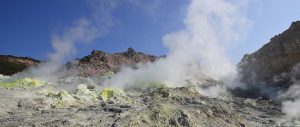What’s the big idea?
Shooting 16 trillion glass discs into space. It sounds like a giant disco ball, but it’s actually supposed to create a 100,000-kilometre-wide sunshade to protect the earth from a significant proportion of the sun’s rays, thus reducing the climate-heating effects of greenhouse-gas emissions.
How would it work?
An electromagnetic launcher would catapult into space a squadron of free-flying discs or “flyers”, each made of thin, transparent sheeting and weighing less than one gram. To fire them all up there, 20 different launchers would need to set off rockets, each containing 800,000 flyers, every five minutes for 10 years. On reaching their destination – the L1 orbit, which is 1.5 million kilometres from earth – the flyers would be released and disperse themselves into positions perpendicular to the sun. This shield would then shade the earth by deflecting the sun’s rays before it reached the earth’s atmosphere. The space-shade’s main proponent, British astronomer Roger Angel, has calculated that by blocking just 2% of these rays, it should be possible to cancel out the heating effect of doubling atmospheric carbon dioxide.
Unsurprisingly, the scheme would not come cheap. On top of the tens of trillions of dollars it would cost to create the shade in space, there would be hefty yearly maintenance costs of around US$100 billion. Once in place, each flyer would last around 50 years.
What are the risks?
If the effects of global warming were lessened in this manner, some fear that humans would not reduce greenhouse-gas emissions, but instead continue to build up the shade to cover greater portions of the earth, making the project even more expensive and extravagant. The scheme could also damage the solar energy industry, and there are concerns about the dangers of flyers re-entering the earth’s atmosphere.
Our verdict
Unlike other geoengineering schemes, this proposal would not interfere with atmospheric or ocean compositions, posing less of a threat to ecosystems. It may even carry the beneficial side-effects of improving crop yields and reducing the risks of skin-cancer. However, the biggest threat from this costly scheme might be that it not only shades us from the sun, but also from the reality of our need to de-carbonise the world’s economies.
Home image by wikipedia


